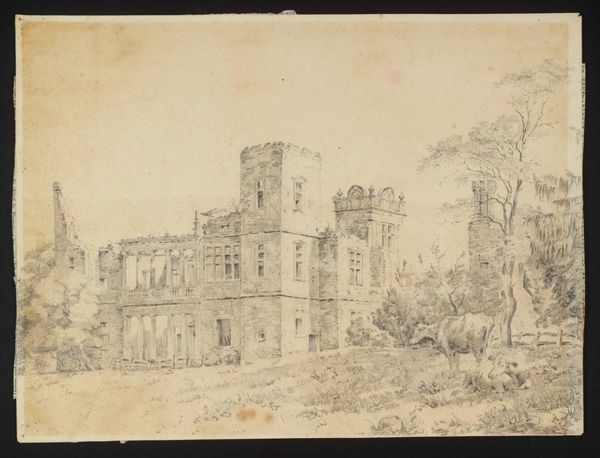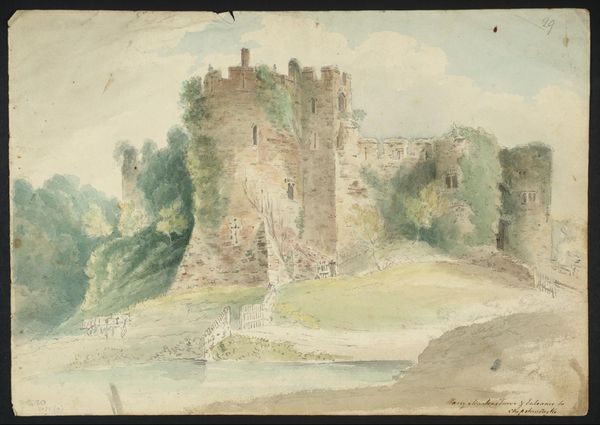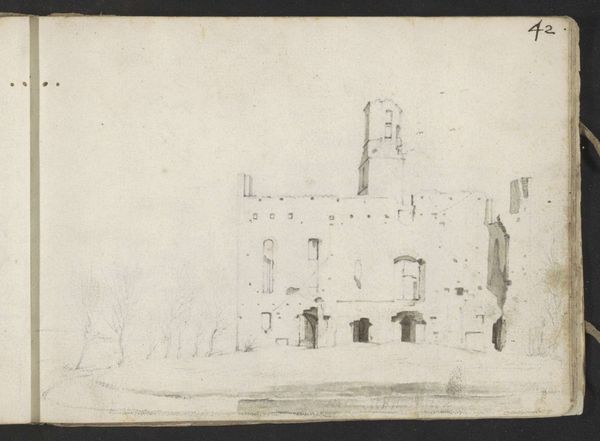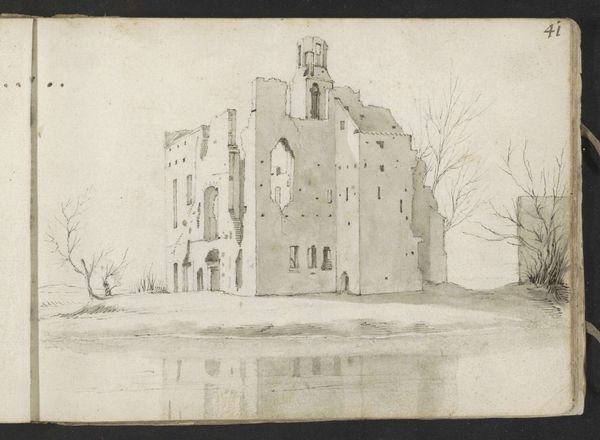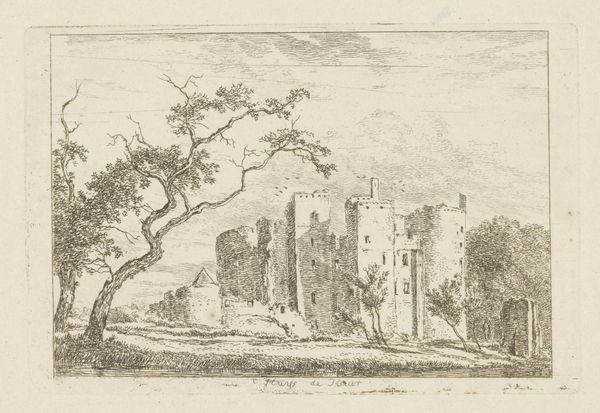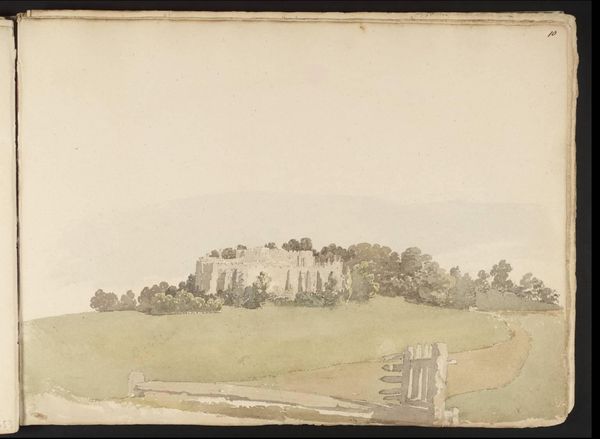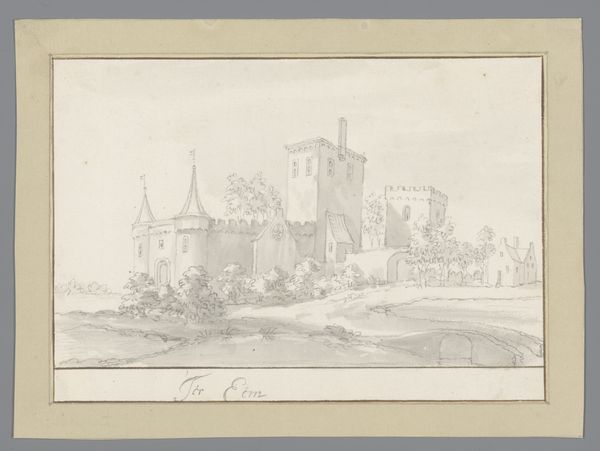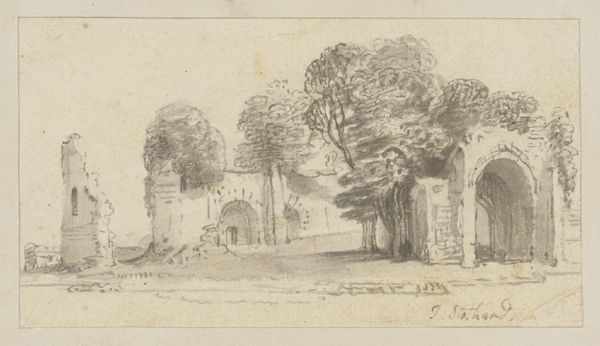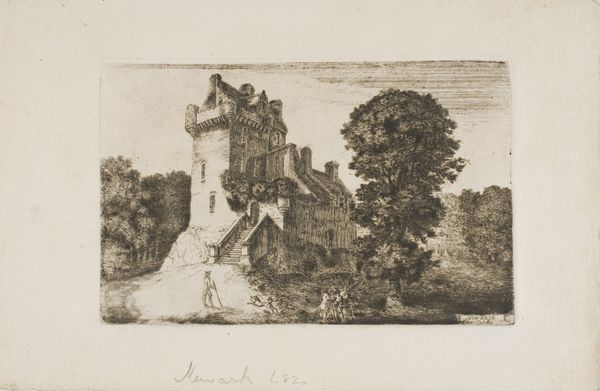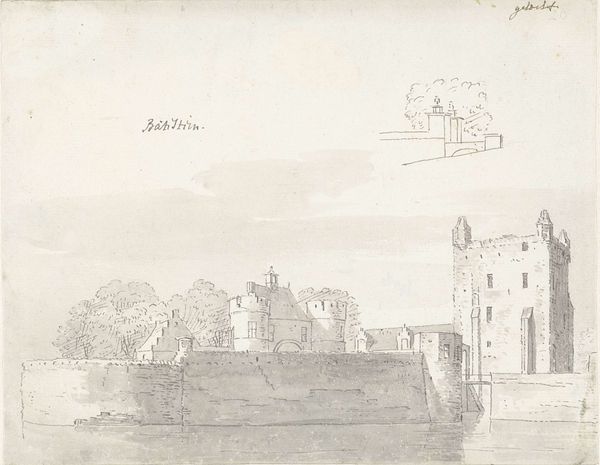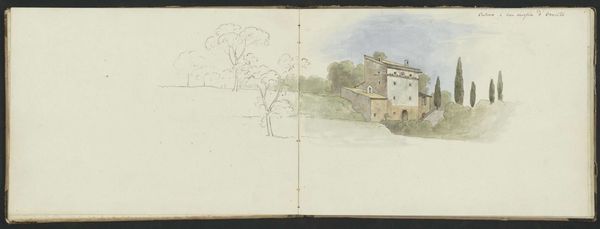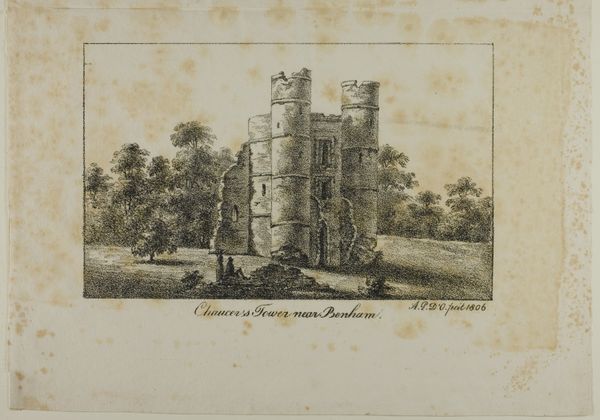
Dimensions: support: 260 x 370 mm
Copyright: CC-BY-NC-ND 4.0 DEED, Photo: Tate
Curator: This watercolor on paper by J. of Canterbury Martin depicts Caldecott Castle in Monmouthshire. It's part of the Tate Collection. The artist was born in 1800 and died in 1899. Editor: It looks delicate, almost ethereal. I'm immediately drawn to the soft washes of color and the way the castle seems to emerge from the landscape. Curator: The castle is a potent symbol here, not just of power but also of the passage of time. Notice how nature reclaims the stones, suggesting a cycle of building, decay, and renewal. Editor: Yes, and I'm curious about the materials. What kind of paper was he using? Was it handmade, locally sourced? The texture influences how the pigment sits, and thus the image we perceive. Curator: Consider too the symbolic weight of castles in the British imagination. They represent history, legend, and even romantic ideals of chivalry and nationhood. Editor: For me, thinking about how Martin was making this-- what brushes, what water, what was the light-- brings a different appreciation of the place, and his labor. Curator: Absolutely. It's a reminder that these images, and the places they represent, are layered with meaning, shaped by culture and history. Editor: This has me thinking about the social context of watercolors— were these scenes widely available, and who was buying them?
